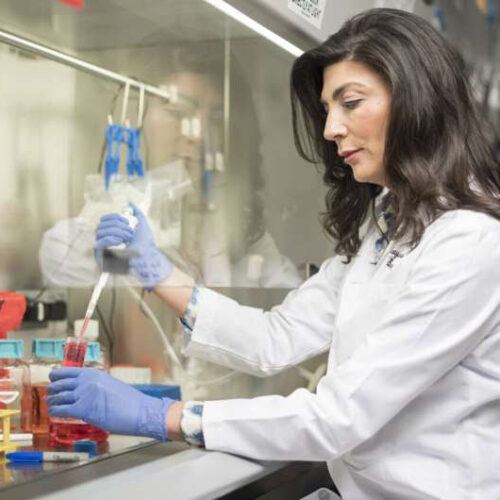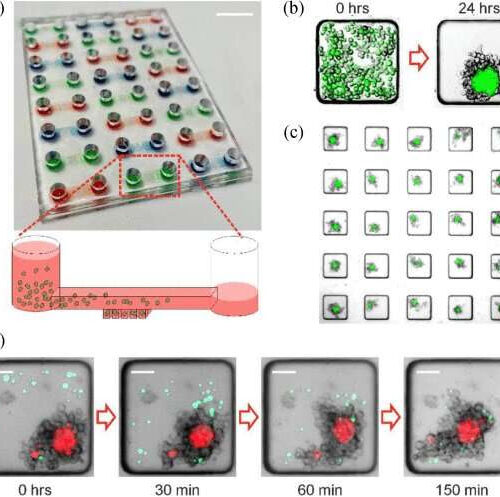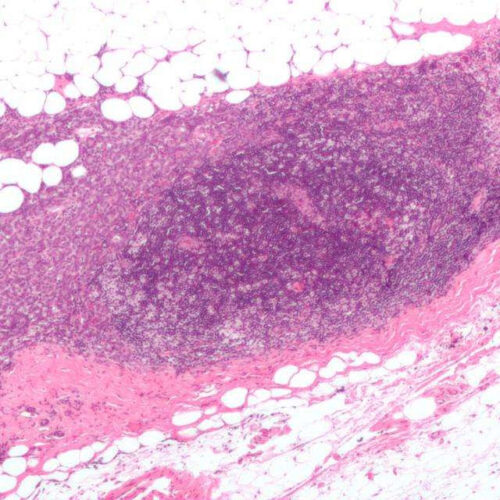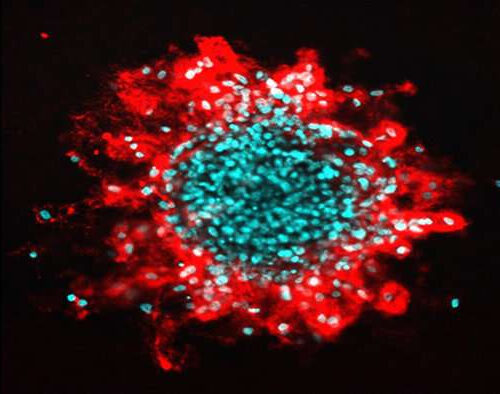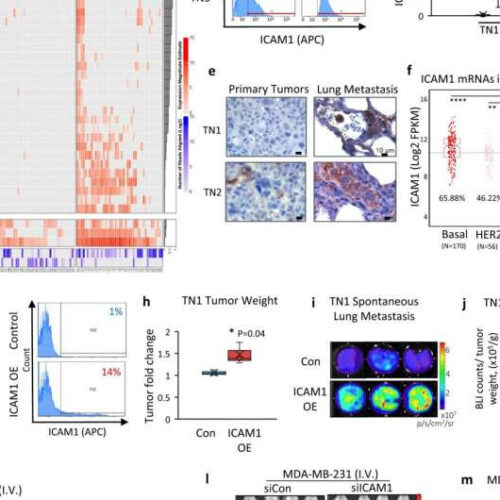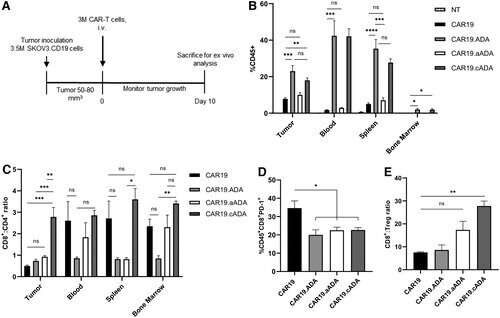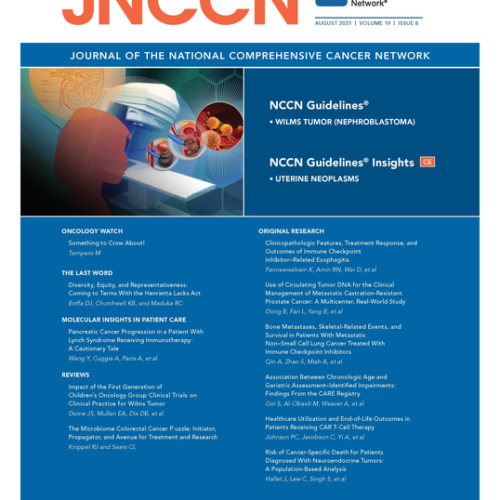by University of Texas M. D. Anderson Cancer Center Katy Rezvani, M.D., Ph.D., working in her laboratory. Credit: MD Anderson Cancer Center Researchers at The University of Texas MD Anderson Cancer Center have developed a new approach to engineering natural killer (NK) cells with a second chimeric antigen receptor (CAR) to act as a logic gate,...
Tag: <span>Tumor</span>
‘Inside out’ signaling promotes tumor growth
by Will Doss, Northwestern University Pharmacological inhibitor of MLCK MW01-022AZ suppressed tumor inflammation and growth. a Schematic of LLC lung tumor implantation in C57Bl6 mice and MW01-022AZ treatment. b–d Effect of MW01-022AZ on LLC b gross tumor morphology (n = tumors from 6 mice) c tumor volume (n = 9 mice and d tumor weight at endpoint (21 days)...
Researchers develop new agents to help root out the hypertension-causing tumor
The fluorine-based agent replaces an iodine-based agent developed decades ago at the University of Michigan. A new study shows that researchers have developed a noninvasive method to identify a potential cause of hypertension with a drastic reduction in radiation exposure. Around 10-15% cases of hypertension, or high blood pressure, are believed to be caused by excessive production...
New screening technology could increase the number of cancer tests done on a solid tumor by 50 times
by University of Strathclyde, Glasgow Microfluidic tumor-stromal co-culture for CAR-T studies. (A) Image of the OC3D Single microfluidic device used (ScreenIn3D Ltd, U.K.) with schematic showing principle of cell seeding. A single-cell suspension flows through a microchannel and cells sediment into microwell traps below the microchannel level. Scale bar = 10 mm. (B) Brightfield and fluorescence images...
Cancer cells mobilizing the nervous system? Let’s use them to inhibit the tumor
by Technion – Israel Institute of Technology Micrograph showing a lymph node invaded by ductal breast carcinoma, with extension of the tumour beyond the lymph node. Credit: Nephron/Wikipedia Researchers at the Technion—Israel Institute of Technology have developed an innovative treatment for breast cancer, based on analgesic nanoparticles that target the nervous system. The study, published in Science...
Ruptures in cell nuclei promotes tumor invasion in breast cancer
by CNRS Image of human tumour cells invading a collagen matrix. The nuclei are stained in blue and the portion of the extracellular matrix degraded by the cells is red. Credit: Guilherme Nader/Institut Curie When cells multiply and migrate, they can be compressed and their nucleus may break open. This phenomenon causes DNA damage. Scientists from...
Surface protein helps tumor cells form clusters
by Will Doss, Northwestern University Fig. 1: Single-cell RNA sequencing profiles comparing breast cancer cells from primary and metastatic tumor sites. a A schematic showing the single-cell RNA sequencing of the sorted cells from L2T- or L2G-labeled TNBC PDX (mice 1 and 2) or MDA-MB-231 tumor (mouse 3)-bearing mice, both primary breast tumors and lung metastases...
A T-cell power-up for tumor treatments
by University of Southern California Credit: DOI: 10.1089/hum.2021.050 Cancer is the second leading cause of death in the United States. But in recent years, a revolutionary therapy has brought new hope in the fight against the disease that takes the lives of nearly 600,000 Americans each year. Chimeric Antigen Receptor (CAR) T-cell therapy is a highly...
JNCCN study reveals neuroendocrine tumor mortality patterns to inform treatment decisions
IMAGE: JNCCN AUGUST 2021 COVER CREDIT: NCCN PLYMOUTH MEETING, PA [August 26, 2021]— Among all patients with neuroendocrine tumors (NETs), the risk of dying of cancer was higher than that of dying of other causes, but mortality varies by primary tumor site, according to a new study published in the August 2021 issue of JNCCN—Journal of...
New technology makes tumor eliminate itself
by University of Zurich A piece of the tumor was made completely transparent and scanned in 3D with a special microscope. The components labeled with fluorescent colors were rendered in a rotatable 3D representation on the computer (red: blood vessels, turquoise: tumor cells, yellow: therapeutic antibody). Credit: Plückthun Lab A new technology developed by UZH researchers enables the...

